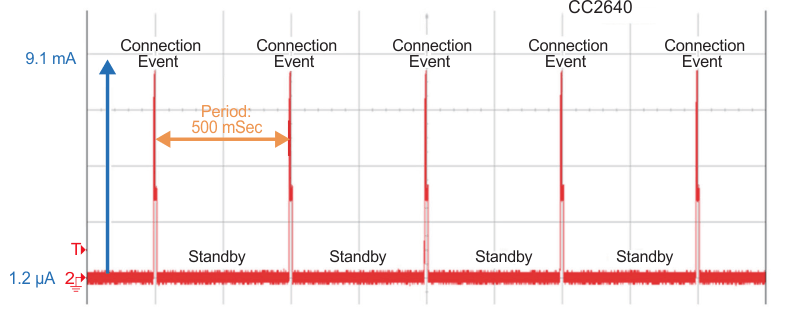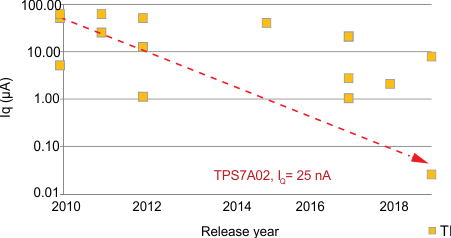SLYY203B September 2021 – April 2023 BQ25125 , LM5123-Q1 , LMR43610 , LMR43610-Q1 , LMR43620 , LMR43620-Q1 , TPS22916 , TPS3840 , TPS62840 , TPS63900 , TPS7A02
- 1
- Overview
- At a glance
- Contributors to IQ
- Why low IQ creates new challenges
- How to break low IQ barriers
-
Electrical Characteristics
- 18
- Avoiding potential system pitfalls in a low-IQ designs
- Achieving low IQ, but not losing flexibility
- Reducing external component count to lower IQ in automotive applications automotive applications
- Smart on or enable features supporting low-IQ at the Smart on or enable features supporting low-IQ at the system level
- Conclusion
- Key product categories for low IQ
Minimizing quiescent current (IQ) is a key factor to reduce power consumption and manage battery life. An Internet-of-Things (IoT) sensor node is one of the best examples of why it’s important to minimize IQ to extend battery life. For example, in the low-power IoT application shown in Figure 1, the SimpleLink™ MCU controls a door lock via Bluetooth®, a Wi-Fi® connection or both.
Because these types of systems spend the majority (>99%) of the time in standby mode, as shown in Figure 2, the IQ in standby or sleep mode tends to be the limiting factor for battery life. Careful optimization of low-IQ power-management blocks makes it possible to extend battery life from two years to more than five years.
Standby IQ has long been a concern, but historically solutions were limited to a narrow set of low-power systems. Recent breakthroughs reduced the IQ in power-management building blocks like DC/DC converters, power switches, low-dropout regulators (LDOs) and supervisors, widening the use of these blocks to end equipment such as industrial meter applications, automotive sensors and personal wearables.
 Figure 1 Smart e-lock block
diagram.
Figure 1 Smart e-lock block
diagram. Figure 2 Current consumption vs. time
in a smart e-lock.
Figure 2 Current consumption vs. time
in a smart e-lock. Figure 3 5-V LDO IQ over
time.
Figure 3 5-V LDO IQ over
time.As Figure 3 illustrates, the IQ in 5-V LDOs has approximately reduced 90% every three years over the past 10 years. Both circuit improvements and optimized process technologies have enabled the reduction of solution area and improved transient-noise performance, while simultaneously reducing IQ.